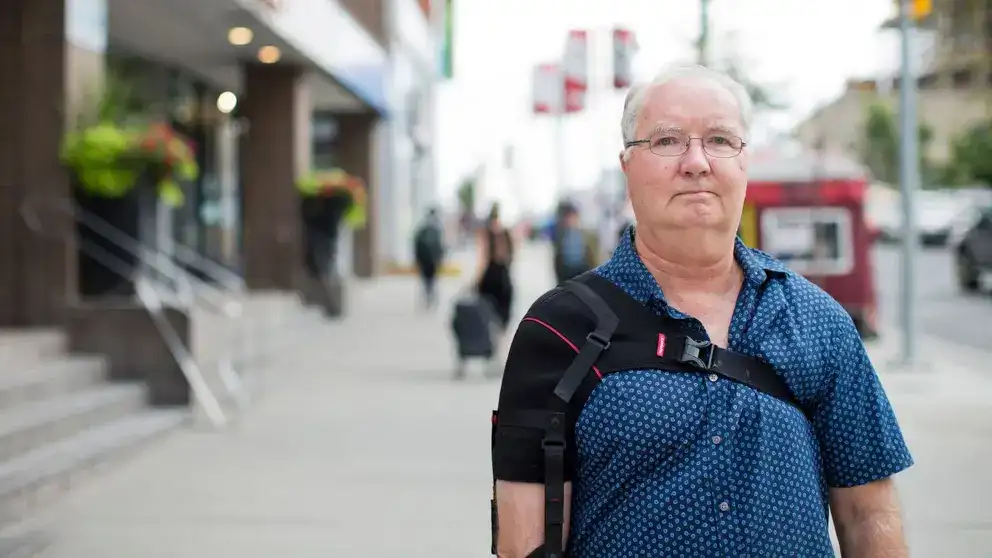Paul Morse’s world crumbled in roughly 15 minutes. He felt tired and achy after a busy work week and thought it might be the flu. Then Paul collapsed and couldn’t get up. His wife, Lynn, found him and called 9-1-1.
He was having a stroke. The clot-busting drug tPA didn’t work to dissolve the blood clot lodged in his brain. This made a craniotomy — removing part of the skull to get the clot — the last chance to save his life.
“My sister made sure I got last rites three times,” says Paul.
He was 61, an active and engaged business leader in commercial real estate. And suddenly, he was paralyzed on his left side. Describing the experience as if a pane of glass was shattered, Paul and his family started picking up the thousands of little pieces.
“At first, the big challenge was to at least have me sit up on my own, to build core strength and prepare for rehab.”
As Paul began his personal journey of recovery, it did not occur to him that his own family history might have increased his risk of stroke. He has since learned about Dr. Guillaume Paré’s research, funded by Heart & Stroke donors.
Genetics could hold the key
Dr. Paré believes that genetics holds the key to the next big stroke breakthrough, and he’s getting close to figuring out why stroke may run in families. If he can find the genetic cause for stroke, it’ll be great news for people at risk, as well as for survivors like Paul who have felt the impact of stroke so intensely.
“We have four children,” says Paul. “My wife and family and close friends were the ones that saved me.”
Four years of rehabilitation and exercise later, Paul has made great progress. From learning how to sit in a wheelchair to walking down his street with a cane, the journey has been long but rewarding. He still needs assistance bathing, getting dressed and eating. But Paul says he has a desire to get better and a willingness to work hard for it.
I’ve found a blessing that I never thought would come my way.
His determination has made him a role model for anyone struggling with their own recovery — and his story is a reminder of the ways that stroke can transform life’s most precious moments.
“My wife has taken on the role of caregiver and both of us were hoping to enjoy our retirement more,” says Paul. “I couldn’t function at CEO level anymore, and somewhere along the way I realized I had to find something else.”
Rewards of volunteering
Paul is now a dedicated volunteer with Heart & Stroke, sharing his story through presentations to donors and working with the fundraising team.
“If there’s anything I can do so someone else doesn’t have to go through what I’ve been through, I want to do it.”
Paul rides a recumbent trike in the annual Heart & Stroke Ride for Heart in Toronto. He can strap his left leg in and get most of the power from his right side. Since 2014 his team has raised more than $108,000 in Ride for Heart.
“That’s given me a real focus to try to stay in shape,” he says.
Paul’s commitment to raising life-saving funds allows researchers like Dr. Paré to do all they can to keep others from experiencing what Paul and his family have gone through.
The way Paul sees it, if his volunteer work has saved just one person, it’s all worth it. “I’ve found a silver lining — a blessing that I never thought would come my way.”
